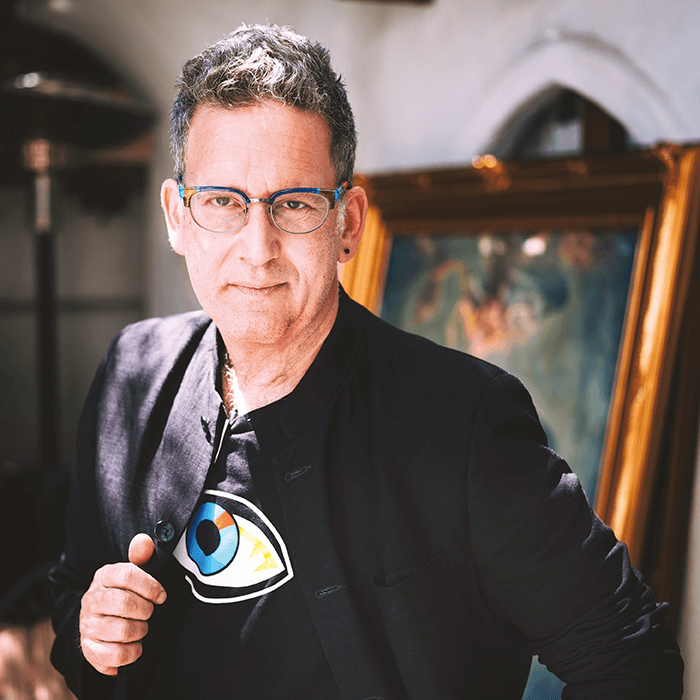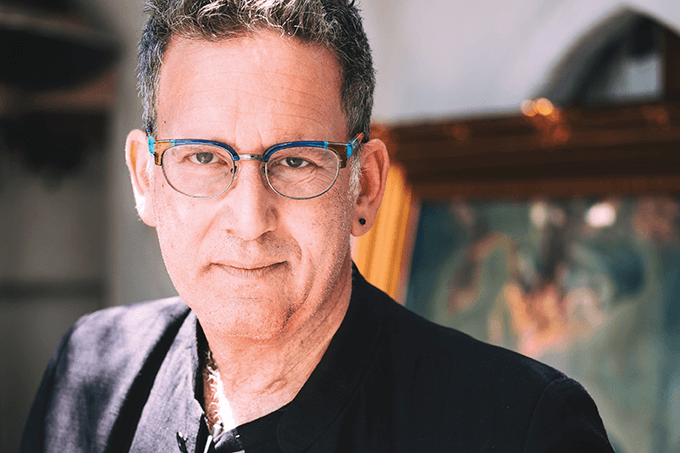
Which passion came first: photography or ophthalmology?
I was first introduced to photography by my father – an amateur hobbyist. I constructed a small darkroom in the basement of our house in New York City and spent hours developing black and white film, as a teenager. This was all put on hold once I started college and later entered medical school. Then, about 20 years ago, a patient told me about an adult education photography program offered by Syracuse University (not far from my practice), which focused on learning to use strobes, light meters, and digital cameras for portraiture. I became hooked and soon found myself spending my weekends renting out studio space at the university. I would read anything I could find on photography and Photoshop. From there, I began subletting space with professional photographers. I now have my own studio, where I currently spend as much time as my ophthalmology career and family life allows.

Do you think ophthalmology gave you an advantage with photography?
All ophthalmologists have an intrinsic understanding of how the laws of optics and biology allow us to see clearly focused images; after all, we repair the human camera! One might think that our knowledge about the eye maps to photography in a fairly linear way. However, these two domains often diverge – and that’s where it becomes interesting! Attractive photographs often use depth-of-field blur to create drama. Shadows and light can be used to create strong contrasts. Color balance, black and white renderings, and grain textures can also be used. All of these factors are completely different from how our brain and retina actually display visual signals. In a way, our eye functions like a very basic point-and-shoot style camera. The differences in how large-sensor DSLR and film cameras record an image and how our eyes perceive it are vast. I look to exploit those differences.
OK – so has your passion for photography changed the way you approach ophthalmology?
Interestingly, yes. I am a general ophthalmologist but specialize in strabismus. The emphasis in training as a strabismus surgeon was that ocular misalignment was a disease first and foremost in causing amblyopia and loss of fusion. But that’s really just a half-truth. As a photographer, I came to realize that the first thing someone looks at in a portrait is the subject’s eyes. We read – consciously and subconsciously – the emotion of a subject by where their gaze is fixed, how relaxed the eyelids are, and how vibrant, bright, and alive (moist) the cornea is. If a subject is uncomfortable with the camera, the eyes show it immediately. I came to understand that with strabismus, the greatest harm is that it alters the natural gaze of a person and, in so doing, doesn’t allow the person to communicate normally with their eyes. In essence, a person with strabismus can no longer “speak” normally with their gaze – nor can they be accurately “read” by others. I never fully appreciated this until I really got into portraiture.
How do you compose a visually striking image?
Someone once said that to take interesting and beautiful photographs, it’s best to start with interesting and beautiful subjects. After opening my studio, I tried to invite subjects talented in arts, performance, modeling, and fashion. I share my work with them in return for working with terrific subject matter. I have now worked with scores of actors, dancers, models, and colorful subjects whom I recruit and meet through Instagram or via recommendation. These individuals include members of Cirque du Soleil, burlesque troupe members, boxers, figure models, professional ballet dancers, rock climbers, rock and rollers, and more. The shoots are always dynamic, exciting, and highly personal. People are made to feel comfortable, and there’s a great vibe with an inviting space and good music. I always come away supercharged – and most subjects are so excited by how they can see themselves in creative and artistic ways.
Tell me about your photography mentor… and his connection to ophthalmology.
Howard Schatz is one of the foremost studio photographers in the US. I was introduced to his work by someone who mentioned that he was formerly a highly regarded retina specialist. I bought some of his art books and ultimately contacted him. Howard invited me to see his high-end, celebrity-frequented studio in New York City. And I was in awe. Eventually, I attended one of his five-day courses and we became friends. He is still actively working – winning awards, and shooting big name subjects – even though he is in his 80s. I am lucky to have this influence; without our shared connection to ophthalmology, I wouldn’t have had the opportunity…
Any other instances where your two careers have crossed paths?
I like to take my camera when I travel. Over the past 15 years, I have participated in 10 international eye care trips, mostly to Ecuador, with a group called Healing the Children. A team of four surgeons and 15 support personnel take over a wing of a small hospital and perform around 100 pediatric strabismus cases. It’s an exhilarating and uplifting experience. On my most recent trips, I wanted to take portraits of our patients – to capture their humanity more than the pathology. I set up a makeshift studio just outside the operating room and photographed the children with their parents just before their strabismus surgery. I called the project Estrabismo.
Do you have any free time?
I run a solo private practice in upstate New York, which keeps me fairly busy. The one thing I love about ophthalmology is that I can enjoy free time when the work day is done. In addition to my photography, I spend a lot of time playing the piano. I grew up playing the keyboard and really enjoy improvising, and playing jazz and contemporary music. Music is challenging to me, but is still so relaxing and liberating. Plus, it keeps my hands limber and controlled. Additionally, I’m lucky to be married to a pathologist who has her own hobbies; we allow one another to indulge our creative sides.
Any final thoughts
I would encourage any ophthalmologist who has a serious interest in photography to display some of their better images in their office; patients truly enjoy seeing them. In fact, it can become a form of transference: they will perceive you as having a good eye!
